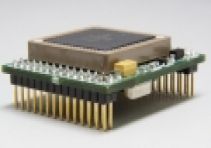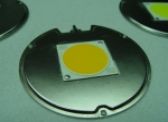APPLICATIONS
Electronics Cooling

S-Bond Technologies has developed a portfolio of bonding solutions with its active solders. With electronic packaging increasingly using new material technologies for improved thermal management, the bonding challenge is to adhere and be thermally compatible in processing and in service.
The growing use of metal cored printed circuit boards (PCBs), aluminum nitride, Al-SiC, heat pipes and vapor chambers is challenging conventional joining processes. S-Bond Technologies products have been shown to bond silicon dies and MEMS to many materials and components without the need to coat or metallize prior to joining. S-Bond alloys can be used to bond to copper-tungsten, alumina, silicon carbide, nickel, and other materials used in lids and substrates.

High Brightness Light Emitting Diode (HBLED) circuits now being developed are requiring innovative cooling solutions and S-Bond alloys are permitting excellent thermal interfaces while soldering in temperature ranges that do not damage the sensitive LED circuitry.
High performance microprocessors need innovative ideas for thermal management if they are to continue to increase in speed. One option is to improve TIM1 performance through the use of direct die attachment using metallic solder materials. Conventional attachment techniques using filled polymers cannot offer the same level of thermal conductivity as a metallic solder bond.
S-Bond Alloy 220M is specially formulated to adhere well to silicon. Conventional soldering to silicon and packaging materials typically has required the use of a flux or thin film metallization of the joining surfaces. S-Bond 220M can directly wet Silicon and related silicates and is an active solder that is fluxless, so the joining processes will not contaminate packages and adjacent devices and do not require premetallization layers on the Si.
S-Bond can be used to direct die attach to package lids, heat pipes, vapor chambers and many heat spreader materials including aluminum, copper, silicon, aluminum nitride, AlSiC or silicon carbide. In the area of power electronics, S-Bond® materials have been used to bond IGBT modules directly to base plates of copper-tungsten, aluminum silicon carbide, aluminum nitride, and nickel coated versions of these materials.
Contact Us to assess the suitability of S-Bond joining of your electronic or opto-electronic packages and refer to our Technical Resources section and Blog for additional information.
More Information?
If you would like someone to contact you or provide information, please submit the information below.
